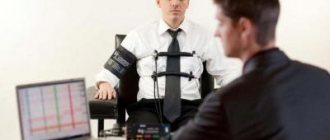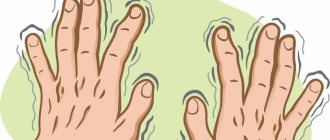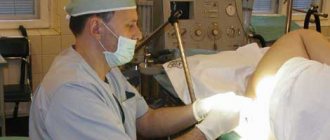Magnetic resonance imaging is the most progressive, reliable and accurate method for diagnosing numerous pathologies and dysfunctions. There is no alternative to the technique in identifying neoplasms and a number of diseases of the central nervous system. Unfortunately, undergoing magnetic resonance imaging has contraindications. For example, people with magnetic metal implants or a pacemaker cannot undergo tests. It is also difficult to perform tomography in people suffering from claustrophobia.
What makes the procedure difficult for people with psychopathological symptoms?
Claustrophobia is one of the five spatial fears. This phobia is observed in 7% of all people. Patients with this psychological symptom experience panic when being in a closed or confined space.
Just a few years ago, undergoing an MRI for people with claustrophobia turned into real torture. Once in the “chamber” of tunnel-type equipment, patients felt panic and dizziness, experienced difficulty breathing and nausea. Many experienced increased heart rate, increased sweating, and chills. The man could not lie still for any time, as he experienced extreme fear. It turned out to be impossible to carry out a tomography, which lasted 30 minutes.
What to do before MRI:
- firstly, before visiting the diagnostic center, be sure to study the research algorithm (knowledge of it will reassure you, and the actions of the MRI operator will not seem unexpected);
- secondly, discuss with the radiologist all the issues that concern you, share your fears with him, and he, as an experienced specialist, will tell you how to cope with anxiety;
- thirdly, before the MRI you should set yourself up correctly. We have included the answer to the question of how to do this better as a separate point (see below).
How MRI is performed on patients with the psychological symptom “claustrophobia” in closed-type tomographs
Despite the complexity of the procedure, many patients with claustrophobia, if they suspect cancer or a disease of the central nervous system, decide to undergo such a difficult test. Experts suggest the use of general anesthesia during the procedure, which allows a person to lie without movement or psychological discomfort for a long time. If anesthesia is contraindicated for a patient for medical reasons, for example, with a diagnosis of a pre-infarction condition, then the specialist has to resort to such tricks as:
- increasing the gap between the wall of the device and the patient’s face by removing the pillow from the chamber;
- if possible, position the patient in the cylinder in a “stomach” position, which allows the person to view the space of the office and not feel in a confined space;
- turning on forced ventilation: when blowing air currents, patients can more easily tolerate immobility and isolation;
- turning on the lighting: a good view of the surrounding space allows you to somewhat reduce fears;
- maintaining constant communication with the patient through an internal intercom: conversation helps the patient to escape from internal sensations.
If these measures are not enough, specialists resort to prescribing sedative medications to the patient, which, unfortunately, also have contraindications.
What sedative to take before an MRI?
Self-administration of medications before a magnetic resonance imaging session is strictly prohibited. Sedatives affect the condition of blood vessels and the nervous system, which is especially important when scanning the brain. Uncontrolled use of medications leads to side effects and makes it difficult to diagnose pathological processes.
Premedication is necessary in case of severe claustrophobia, increased anxiety, or unstable psycho-emotional background of the patient. The choice of sedatives is made by the attending physician, taking into account the diagnosis, clinical picture, and health characteristics of the patient.
If claustrophobia does not allow an MRI to be performed, an alternative instrumental study is selected for the person. In some cases, scanning under anesthesia (in a hospital setting) is possible.
Open type MRI machines for patients with claustrophobia
A real salvation for patients with the psychopathological symptom “claustrophobia” who were prescribed magnetic resonance diagnostics was the use of an open-type MRI device during the study.
The first such equipment was developed for the needs of veterinary medicine. Since doctors treating animals have to deal with “patients” of different sizes, lengths and numbers of limbs, and even sedatives do not allow diagnosis, since the animal “refuses” to remain motionless in the cylinder, the designers proposed equipping veterinary clinics with open tomographs . Today, equipment of this type, improved and modernized, is used in diagnostic centers for people.
The operating principle of an open-type MRI machine does not differ from standard equipment. The differences affect only the appearance of the unit: the scanner is placed at the top of the open chamber, leaving a side gap. The absence of side walls makes it possible to study the condition of:
- overweight patients,
- small children who refuse to be in a closed cell,
- people with severe pathologies that do not allow them to straighten up to their full height,
- patients with claustrophobia symptoms.
An important feature of open MRI units is the reduced noise level. The quiet operation of the scanner does not negatively affect the patient’s psychological state and does not increase tension, which can be observed during the noisy operation of a closed tomograph.
Unfortunately, not all diagnostic centers and clinics have MRI machines with an open camera. This is due to the higher cost and greater weight of open devices. Therefore, the best option if you are overweight or have claustrophobia is to go to a center that uses equipment that allows you to perform an MRI for claustrophobia.
How to get an MRI if you have claustrophobia
We often hear from our patients that they tried to undergo research in other clinics, but when they had a panic attack, no one gave them time to prepare, come to their senses, and calm down. Those. The reception follows the principle: “Either lie down and do it, or go somewhere else.” Of course, it is much easier to work with a patient who is not afraid of anything, nothing hurts or bothers him. But the job of doctors, first and foremost, is to help! And it doesn’t matter how much effort and time it takes. We try to help by choosing an individual approach to each person. After all, for us, patients are not faceless units, but people! Each with their own pain, their own worries and problems. That is why our patients in 99% of cases undergo all the necessary tests with us... And their grateful reviews are the best confirmation of this:
“I, Igor Valerievich Ts., was at the reception on April 11, 2019. I had an MRI with Daria Nesterova, I was very pleased with the professionalism and humanity! Suffering from claustrophobia, I enjoyed the procedure thanks to Daria Nesterova. Before this, I had an MRI in three places, where I refused to do the procedure. I will definitely come back to you again, I need to do 3 more procedures” Tsiglyaev I.V. 04/11/2019
“I express my deep gratitude to Daria Alekseevna Nesterova for her sincere and cordial approach to us when visiting the clinic!!! If it weren’t for her professionalism and approach to patients, I would not have been able to undergo the procedure (there were attempts to overcome claustrophobia in several other clinics). But only with the help of Daria Alekseevna I managed to go through the procedure. Low bow to her!!!" Kalinina O.K. 10/06/2018
If you are afraid, if you are not ready to undergo an MRI on a closed tomograph, if a child needs to be examined and you want to be present, we are waiting for you! Come and see that even with claustrophobia you can undergo an open MRI in comfort!
*All reviews given in this article are real and posted in the “Book of Complaints and Suggestions” of Modern Diagnostics Clinic LLC. All patients can read reviews and leave their own during any visit to the clinic.
Are there any prohibitions on MRI?
Despite the maximum safety of the technique, there are a number of prohibitions on hardware scanning:
- implanted metal implants that cannot be temporarily removed;
- electronic stimulators that support life activity;
- contrast during pregnancy;
- the initial period of gestation (the first three months) to exclude any external influence on the developing child;
- identified allergic rejection to the components of the coloring preparation;
- mental, neurological disorders.
During the procedure, be sure to calm down and overcome fear. Before the MRI, as soon as the patient has arrived for the session, you can ask the laboratory assistant to give a sedative or discuss the issue of general anesthesia. Stillness and calm are the main conditions for obtaining correct images on a tomograph.
Contraindications to tomography
A CT scan is not done if the patient is a pregnant woman. Breastfeeding mothers occasionally undergo radiation examination of the brain, but the baby should not breastfeed for 24 hours after this.
The main contraindication to MRI is the presence of metal objects in the brain or nearby.
It can be:
- dental crowns or braces;
- fixed dentures;
- clips applied to vessels for aneurysms;
- staples for tightening skin sutures;
- Hearing Aids.
Metal is sensitive to the magnetic field during MRI, which is especially dangerous when metal elements connect the edges of a wound or sutured vessels. Before a diagnostic procedure is prescribed, a detailed examination of the patient is carried out by the attending physician. Medical documents are studied and contraindications to MRI are identified.
MRI is relatively contraindicated if the patient’s condition does not allow him to lie quietly in one position for at least a few minutes, which happens with nervous disorders. At the same time, fixing a broken spine with a cervical (head) orthosis made of mineral or polymer materials often does not interfere with MRI examinations.
Main signs of the disease
When entering a small room, especially without windows, a claustrophobic feels a gradually increasing sense of anxiety. He tends to keep doorways open and positioned closer to exits. When it is impossible to leave a closed space, anxiety is greatly aggravated. Most often, symptoms appear as:
- rapid heartbeat;
- dizziness and headaches;
- premonitions of imminent danger;
- shortness of breath;
- increased sweating;
- tightness in the chest;
- dry mouth;
- stiffness of the arms and legs, etc.
Make an appointment now!
In some cases, people experience a fear of death or loss of control over their emotions and actions. Sometimes the disease is almost asymptomatic, accompanied only by mild anxiety. In severe cases of the disorder, fainting and panic may occur.
Causes of claustrophobia
Claustrophobia is a psychological pathology in which a person is frightened by small rooms. Confined space disease is a form of the disorder. It occurs in 3-7% of people on Earth.
Often, attacks of claustrophobia occur after a long time ago of anxiety or overwork, which greatly affected the emotional state of a person.
Fear arises again in a person if he finds himself in a situation in which he feels the emotions he has experienced. Often the patient himself does not know that he has a fear of closed spaces until some situation provokes an attack of claustrophobia.
Claustrophobia is a type of panic attack and is not considered a disease or diagnosis.
During the MRI procedure, you need to lie on the movable table of the machine, which slides into a narrow tunnel. Such an environment can cause negative emotions and can cause a sudden attack of claustrophobia.
A rapid heartbeat is the first sign that can cause real panic in severe claustrophobia. At this moment, a person may be able to pull himself together and calm down. But this always happens, and a person’s imagination can draw horrors in his head, from which he loses control over his behavior.
In a state of panic, this procedure is not carried out, as the person may harm himself and the equipment. This is because MRI requires the patient to lie still for 15 to 25 minutes to produce a clear image.
Contrast tomography
The introduction of contrast significantly expands diagnostic capabilities. CT, usually performed to clarify bone pathologies or as part of emergency care, is becoming useful to diagnose vascular diseases. Magnetic resonance is also used for similar purposes.
Direct access to the head vessels is difficult and dangerous, so it is better to inject contrast agents into the subclavian artery during preparation for MRI.
Due to the entry into the vascular bed of substances foreign to the human body, new contraindications and precautions arise.
In particular, the subject should not have:
- allergic reactions to iodine-containing drugs;
- diabetes mellitus, some other endocrine diseases;
- difficulties with the removal of contrast agents.
In cases of severe liver or kidney failure, MRI may not be possible. It is difficult to break down and remove the administered drugs, and their long stay in the body is harmful to health.
If the patient or accompanying persons are aware of the presence of possible contraindications, the doctor should be warned about this in advance.
With contrast, any diagnostic method makes it possible to obtain similar results. The dilation and constriction of blood vessels and bleeding sites are perfectly visualized. It can be seen which organs or areas of brain tissue lack blood supply. All that remains is to choose which method is better, taking into account the patient’s condition.
Who really shouldn't do the research?
Despite the complete safety of tomography, there are a number of contraindications to it. The absolute obstacles are:
- Use of an MR-incompatible pacemaker;
- Ferromagnetic middle ear implants;
- Large metal implants or foreign objects in the body;
- Ilizarov apparatus;
- Intracranial hemostatic clips.
Relative contraindications include:
- Artificial heart valves;
- Homeostatic clips;
- Nervous system stimulants;
- Extensive tattoos made with metallic inks;
- Pregnancy first 12 weeks.
Contrast is not used:
- If you are allergic to substances of the drug;
- Homeostatic anemia;
- Renal, hepatic, cardiac dysfunction;
- Bronchial asthma and diabetes mellitus in severe forms;
- At any stage of pregnancy.
After undergoing tomography with contrast, lactation is interrupted for 48 hours, that is, until the substance is completely eliminated from the body.
What is the manifestation of a psychological disorder?
Phobia of small space can be pronounced, the degree of which directly depends on the symptoms of the disease. Doctors include the following as mild complaints:
- Weak degree of nausea.
- Dizziness.
- Tachycardia.
- Minimum stress levels while in close quarters.
Patients who find themselves in a standard situation (for example, traveling by transport or elevator) may suddenly experience the following symptoms:
- Fainting.
- Increase in blood pressure readings.
- Discharge of blood from the sinuses.
- Breakdown.
- Hysterical.
- Lack of oxygen.
- Feeling anxious.
Reviews
02/18/2019 Thank you very much for your attentive attitude and understanding of me as a claustrophobic patient. They calmed me down from the first minutes of communication. And of course, an excellent open-type MRI machine. Thank you very much!
Filippova S. V.
04/05/2018 Thank you very much for the attentive attitude of doctors towards patients with claustrophobia. Especially the doctor who sat next to me and held my hand during the MRI.
E. Egorova
06/04/2016 Today, 05/29/2016, my wife S.A. underwent an MRI examination of the brain and blood vessels. She has claustrophobia. We tried to do a similar study in another medical facility. institution, but to no avail. In your center, thanks to the highly professional actions of the team - the administrator - Alena, the doctor T. A. Kirillova and the operator A. A. Medennikova - we managed to overcome the fear of closed spaces and go through the procedure. The doctors spent 2.5 hours of their time on us. I ask you to encourage these employees. And from our family, our deepest bow to you and your employees.
Spassky V. N.
Read all reviews
MRI of the head
- MRI of the sinuses
- MRI of the eye orbits
- MRI of the pituitary gland
- MRI of the brain
- MRI of the ear and auditory nerve
MRI of the spine
- MRI of the thoracic region
- MRI of the lumbosacral region
- MRI of the cervical spine
- MRI of 3 parts of the spine
Vascular MRI
- MRI of cerebral vessels
- MRI of neck vessels
- MRI of the head and cerebral vessels
- MRI of the aorta
MRI of joints
- MRI ankle
- MRI of the knee joint
- MRI of the elbow joint
- Shoulder MRI
- MRI of the hip joints
- MRI of the hand
- MRI of the foot
- MRI of the wrist joint
MRI of the pelvic organs
- MRI of the pelvis in women
- MRI of the pelvis in men
- Prostate MRI
- MRI of scrotum and penis
- MRI of the uterus and ovaries
- Bladder MRI
Abdominal MRI
- MRI of the spleen
- MRI of the gallbladder
- MRI of the liver
- MRI of the pancreas
- MRI of the kidneys and adrenal glands
- MRI of the biliary tract (MRCP)
Soft tissue MRI
- MRI of soft tissues of the face
- MRI of soft tissues of the neck
- MRI of soft tissues of the thigh
- MRI of the thyroid gland
- MRI of the mammary glands
MRI chest
- MRI of the heart and coronary vessels
- MRI of the lungs
- MRI of the larynx
- MRI of the thoracic aorta
Complexes and targeted programs
- MRI of the cervicothoracic spine
- MRI of the head and cervical spine
- MRI of the entire spine









